On the windowsills of many gardeners in the flower collection there is such an original and beautifully flowering succulent as Kalanchoe. However, beautiful and long flowering, as promised in the store, does not always succeed in waiting. To solve the problem, it is worth finding out the reasons why Kalanchoe does not bloom.
Material Content:
Reasons why Kalanchoe does not bloom
Having become the owner of a succulent perennial, beginning flower growers expect lush and prolonged flowering, as described in the literature or was told to them in a flower shop. But in reality, sometimes it happens that the Kalanchoe does not bloom and stretches up. There are a number of reasons that explain this situation, which are associated with improper conditions of detention and errors in care.
Conditions of detention
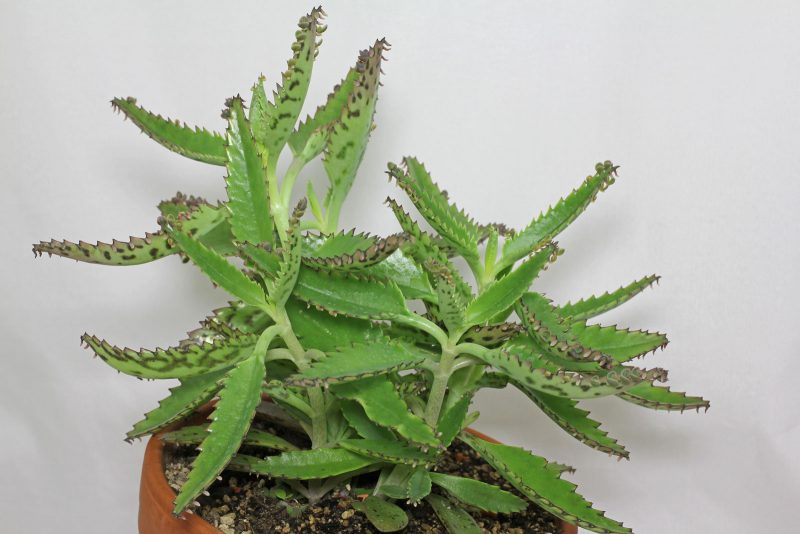
For the full development of succulents, which is evidenced by flowering, it is necessary not to violate the content regulations:
- Lighting. Succulents are not picky about lighting. However, a deficit of light leads to elongation of shoots and the plant expends all its forces to this process.
- Temperature. If you do not let the plant rest, providing the necessary temperature conditions in the range of 20 - 25 ° C, Kalanchoe may not have enough energy for flowering.
- Humidity. Kalanchoe does not need to be sprayed, but it requires periodic rubbing of the shoots from dust, which makes the plant easier to breathe.
Unsuitable soil for growing
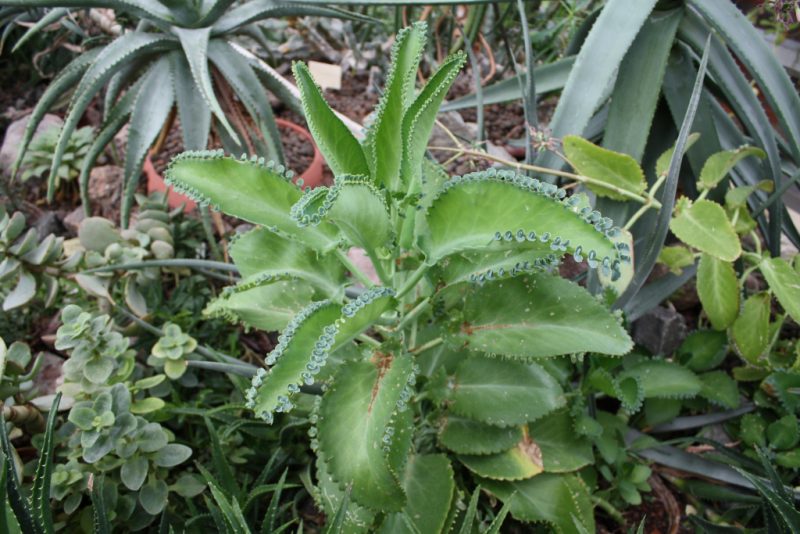
In specialized stores, shipping containers with kalanchoe are filled with a poor substrate, enriched with special hormones that do not last long, but stimulate the laying of buds by keeping the perennial in short daylight hours for 2 to 3 days. After the flower moves to the apartment, where the necessary conditions are created for it, the succulent continues to bloom, spending vitality, while being in poor soil, which will adversely affect the onset of the flowering phase in the next season.
Major Care Mistakes
If the flower has optimal conditions, then the reason for the lack of flowers on the Kalanchoe may lie in improper care.
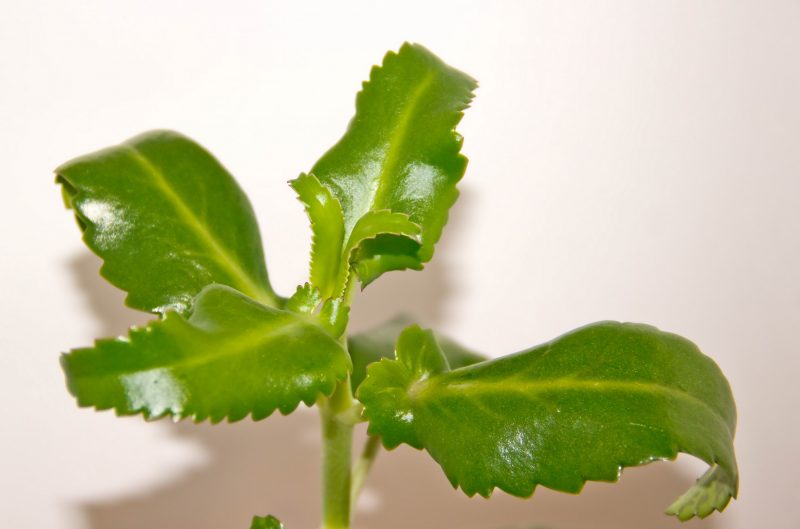
- Overflow. The flower grower too often watered the succulent, accumulating moisture in the leaves.
- Deficiency or overabundance of nutrients. Failure to feed with phosphorus and potassium becomes the reason for the lack of succulent nutrition for the formation of buds. A surplus of nitrogen can lead to intensive growth of green mass to the detriment of budding and flowering.
- Lack of timely pruning. After the peduncles dried, they were not removed in a timely manner and a summer nipping was not carried out, which did not allow the shoots to stretch.
- Lack of rest period. After flowering, the plant was not provided with a period of stagnation, lasting for 2 months.
How to make a plant bloom
Kalanchoe is a short daylight plant, the flowering phase of which occurs in the winter.

If you do not know how to make Kalanchoe bloom repeatedly in the summer, then follow these recommendations:
- After withering inflorescences and the stagnation phase, it is necessary to feed succulent twice a month with phosphorus-potassium fertilizers, which stimulate budding and prolonged flowering. It is also recommended to resume normal irrigation.
- When new shoots are formed, they should be removed, and last year's tweezed to the length of two buds.
- When new shoots with 3 pairs of true leaves develop in the places of the pinch, it is worthwhile to re-pinch, which will make it possible to become the owner of a lush bush with a compact crown.
To bookmark the buds, it is necessary to provide Kalanchoe with a short daylight by covering the plant with a cardboard box after lunch. You can also hide a pot of tropical flora from the sunlight in a closet.
Proper flower care
To observe the lush and prolonged flowering of the inhabitants of the tropics annually, it is necessary to study all the nuances of caring for succulents.

- How to care for Kalanchoe after purchase. If a flowering succulent was purchased in the store, then after the florist brings it home, it is necessary to quarantine the flower for 30 days and wait for the flowering to end, after which it is necessary to transplant from a shipping container with scarce soil. Under the quarantine regime, Kalanchoe should be isolated from other indoor plants and systematically examined for the presence of diseases and pests.
- Watering. The irrigation regime for Kalanchoe provides for the procedure in the spring-summer period within 2 times a week. In winter and autumn, water the flower should be no more than 1 time per week. Too much moisture can lead to the development of gray rot and future death of the flower in the absence of timely treatment.
- Fertilizing and fertilizing. Before flowering, fertilizing, which includes phosphorus and potassium, should be carried out twice a month. During dormancy, fertilizer is not applied. As nutrient complexes, you can use liquid agrochemicals for flowering plants, a large assortment of which is presented in specialized flower shops.
Blooming Kalanchoe: Transplant
The plant should be transplanted after flowering and the removal of faded inflorescences, when the roots completely braid the earthen lump.
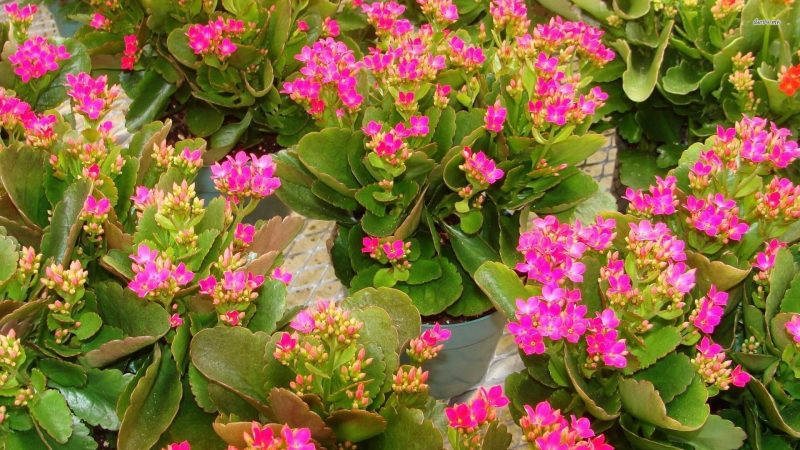
The procedure is carried out according to the following scheme:
- A low capacity of 20 cm in diameter is selected.
- A drainage layer is placed at the bottom.
- To obtain a loose soil mixture with a slightly acid reaction, turf, leaf soil, humus, sand, charcoal, pine bark in a ratio of 3: 2: 2: 2: 1: 1 are mixed.
- The drainage layer is slightly crushed by the substrate, onto which Kalanchoe is transferred and sprinkled with the remaining part of the soil mixture.
- The soil is compacted and slightly watered.
Protection against diseases and pests
A healthy lush bush is rarely affected by harmful organisms. However, with regular overflows, the development of a fungal disease - gray rot can begin.
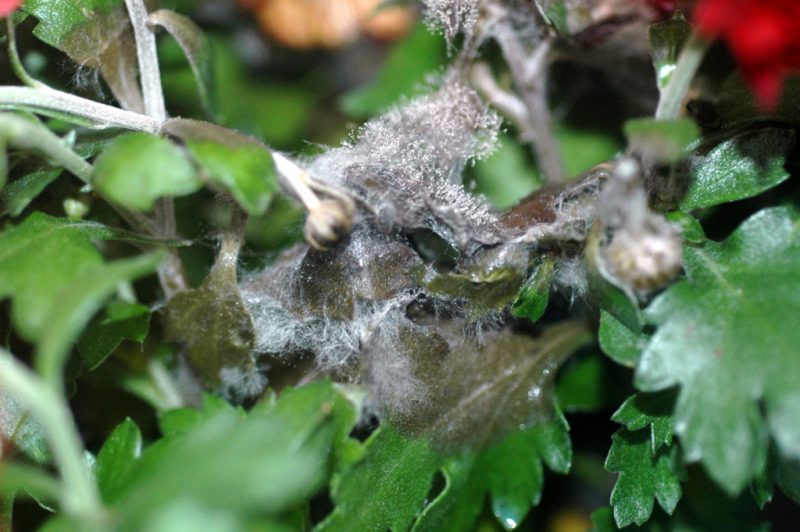
At the first sign, it is necessary:
- extract Kalanchoe from the earth;
- examine its root for pathogens;
- remove affected parts;
- transplant the plant into a fresh substrate;
- then treat the bush with a fungicide.
Among the pests that can attack succulents, there are mealybug, aphids and spider mites, which must be controlled using insecticidal preparations according to the manufacturer's instructions. Spraying should be carried out in the open air, having previously covered with an earthen lump with a cloth or other material that will protect the substrate from pesticides.
It is interesting:Kalanchoe Degremona: home care
Kalanchoe after flowering
When the Kalanchoe completes flowering, it is necessary to conduct a cardinal pruning. The peduncles should be removed so that there are practically no parts left that could rot. All old and poor looking shoots are also cut. At the same time, watering and feeding are reduced, after which the succulent is provided with a rest period lasting for 2 months.
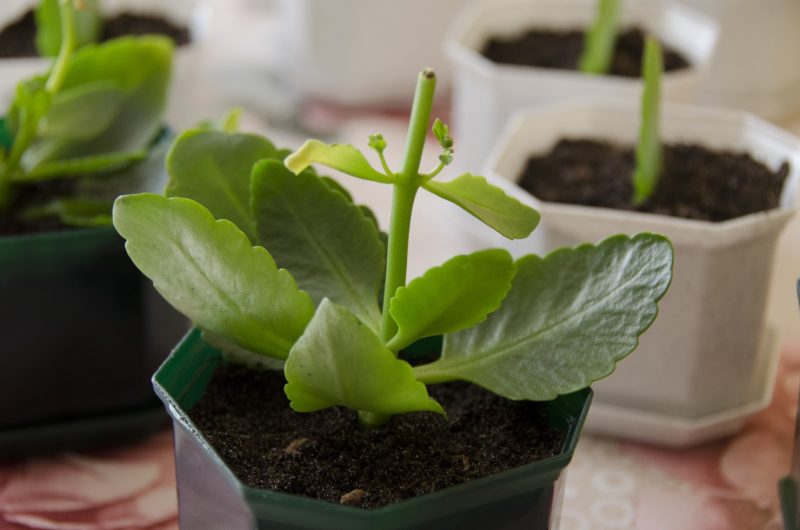
So, despite the fact that Kalanchoe is considered an undemanding culture, to ensure its beautiful and long-lasting flowering, it is necessary to properly care for the plant and ensure the correct conditions of detention.












